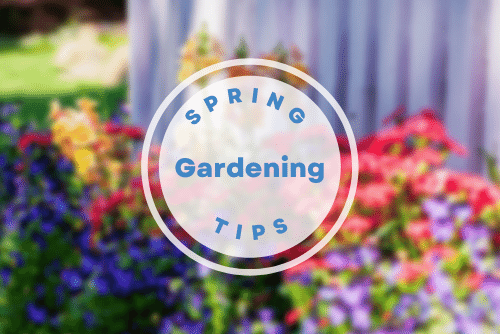Here in the Pacific Northwest, we take our sunshine seriously, and we’re really looking forward to spring. If you’re new to gardening or want to step up your game, here are some helpful tips to make sure it becomes a blooming sensation.
1. Placement Matters
Be sure to plant everything in the proper place according to its sunlight or shade needs. Read the plant or seed packets’ labels carefully. Pay attention to how much sun exposure an area of your property gets before deciding what to plant there.
2. Prepare Your Soil
Before you plant, improve your soil’s condition and drainage with organic matter and compost. Organic matter enriches soil and then it can retain nutrients and moisture while also draining well. Compost gives your soil important nutrients. The best soil is easy to dig, crumbly, and a bit loose so that plant roots have the oxygen they need. When selecting a fertilizer, use an organic one to add nitrogen, phosphate, and potash.
Also, when your soil is really wet, avoid digging or planting in it. Working it can damage the soil structure. When the soil is crumbly and you can’t easily form a ball when you squeeze it in your hand, that’s when you can till or dig.
Learn more about preparing your soil and what type of soil you may have.
3. Watch Out For Garden Pests
Due to the amount of rain we get here, slugs and snails are common Pacific Northwest garden pests. So, keep an eye out and invest in some slug bait. Also, keep in mind that there are many beneficial insects too like centipedes, millipedes, and ladybugs.
4. Select Plants That Thrive in Zone 8b
If you’re new to the Pacific Northwest and/or new to gardening, you may be wondering what to plant. Here are some ideas of what will do well here in Zone 8b.
- Herbs that grow well here include lavender, sage, parsley, thyme, and rosemary. Mint also does well but it can be invasive so it’s best to grow it in a container.
- If you’re wanting a vegetable garden, Zone 8b is a great climate for it. Gardeners here can plant early in the season or start their crops indoors before the last frost date for a longer growing season. Ideas for early spring and early summer crops include beets, carrots, cauliflower, cucumber, kale, lettuce, spinach, strawberries, peas, and squash.
- For shade-loving plants, consider hostas, bleeding hearts, and coral bells.
- If you’re looking for great perennials, check out the video below.
 Facebook
Facebook
 X
X
 Pinterest
Pinterest
 Copy Link
Copy Link
